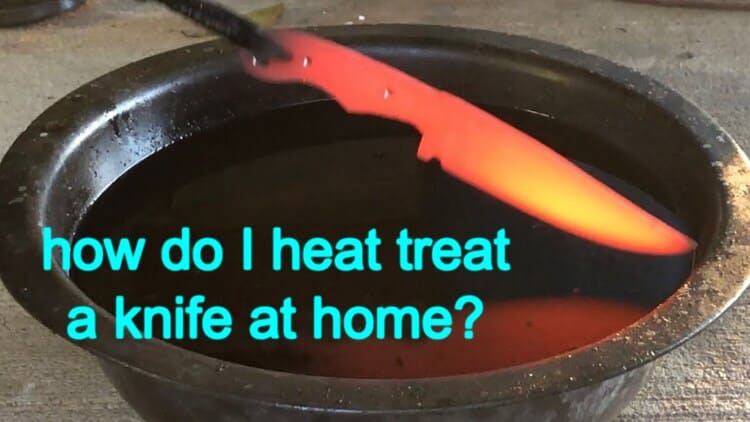how do I heat treat a knife at home?
“Are you a knife enthusiast looking to heat treat a knife at home? Heat treatment is a crucial process that can significantly enhance the performance and durability of a knife. “
While it’s important to note that professional heat treatment is preferred for optimal results, it is possible to achieve satisfactory outcomes with careful attention to detail and the right equipment.
In this step-by-step guide, we will explore how to heat treat a knife at home, focusing on the essential processes and safety considerations.

Safety First
Before you begin the heat treatment process, ensure that you prioritize safety. Take the following precautions:
- Wear appropriate protective gear, including heat-resistant gloves, safety glasses, and long sleeves.
- Work in a well-ventilated area or use proper respiratory protection to avoid inhaling fumes.
- Keep a fire extinguisher nearby and have a clear evacuation plan in case of emergencies.
Preparing the Knife
Start by selecting a suitable knife for heat treatment.
- Ensure that the knife is made from a steel suitable for heat treatment
- Ensure that it doesn’t have any non-heat-treatable components such as handles made of plastic or other heat-sensitive materials.
- Remove any scales, coatings, or handle materials that may hinder the heat treatment process.
Normalize the Steel
Normalization involves heating the steel above its critical temperature and allowing it to cool in still air. This process helps to relieve internal stresses and refine the grain structure. Follow these steps:
- Preheat the oven to approximately 800°C (1470°F).
- Place the knife in the oven and allow it to heat until it reaches the desired temperature.
- Once the steel has reached the target temperature, remove it from the oven and let it cool to room temperature in still air.
Harden the Blade
The hardening process involves heating the steel to a critical temperature and quenching it rapidly to achieve maximum hardness. Here’s what you need to do:
- Preheat the oven to the recommended austenitizing temperature for your steel. For example, if you’re working with a steel like Sandvik 14C28N, you can set the temperature to 1060°C (1940°F).
- Place the knife in the preheated oven and allow it to reach the austenitizing temperature.
- Once the steel has reached the desired temperature, carefully remove the knife from the oven and immediately quench it in a suitable quenching medium, such as quenching oil or a brine solution. Ensure the entire blade is submerged during the quenching process.
- Agitate the blade in the quenching medium to facilitate rapid cooling and uniform hardening.
- Monitor the temperature of the blade during quenching using a temperature probe or heat-sensing paste to ensure it reaches the desired level.
Tempering the Blade
Tempering is a critical step that reduces the brittleness of the hardened steel and improves its toughness and durability. Follow these guidelines:
- Preheat the oven to the recommended tempering temperature for your steel. The specific temperature will depend on the desired hardness and toughness. For example, a tempering temperature of 175°C (345°F) is often suitable for many knife steels.
- Place the quenched blade in the oven and allow it to reach the tempering temperature.
- Once the blade has reached the desired temperature, maintain it at that temperature for the recommended duration. Typically, a tempering time of around 2 hours is recommended.
- After the tempering process is complete, remove the blade from the oven and let it cool to room temperature.
Final Steps
Once the blade has cooled, you can proceed with finishing touches, such as grinding, polishing, and applying a protective coating to enhance its appearance and corrosion resistance. Remember to follow proper safety procedures when working with power tools or sharp objects.
Conclusion
Heat treating a knife at home can be a rewarding experience, but it requires precision, caution, and adherence to safety guidelines. By following the steps outlined in this guide and using appropriate equipment, you can achieve satisfactory results.
However, it’s essential to note that professional heat treatment is recommended for optimal performance and safety. If you’re unsure or inexperienced, it’s best to consult a professional or experienced knife maker for assistance.
